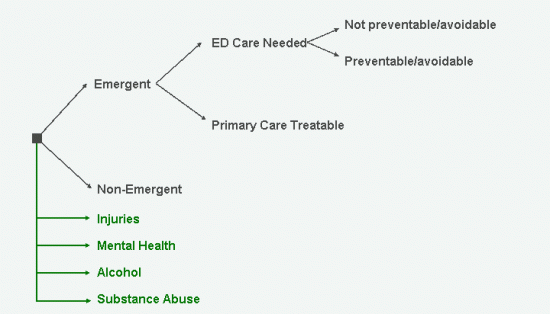Medicaid Expansion Leads to Increased Inappropriate ER Usage Study Finds
Josh Elliott-Traficante
January 9, 2014
A few years ago, Oregon chose to expand Medicaid coverage to the population now under consideration for coverage here in New Hampshire. In Oregon’s case, state funds would cover the total cost of the program. The problem for Oregon policy makers was that there was only enough money available to cover some, not all, of those eligible. To remain fair, coverage in the expanded Medicaid program was chosen by lottery.
This lottery presented a unique opportunity for researchers. Given the nature of the process, it created a randomized sample that received Medicaid coverage, while those that did not became a de facto control group. Budgetary limits had created the perfect case study to analyze the effects of Medicaid Expansion.
So far the results have been mixed, but the recent data on emergency room (ER) usage is troubling. After 18 months, the study has found that ER usage among the newly covered Medicaid population was 40% higher than the control group. Not only is this a sharp increase in real terms, but keep in mind who the control group is: people with no insurance coverage at all, who often uses emergency rooms as their primary source of healthcare.
That being said, just stating that ER utilization has gone up does not explain the nature of the usage. Thankfully, the study also breaks out usage by the type of visit based on an algorithm designed by New York University and used universally by the Medicaid program. The algorithm sorts out visits into three main categories: Emergent[1], non-Emergent[2], and a catch all of ‘other’,[3] as well as a number of sub-categories diagrammed below. It found Medicaid coverage increased visits that were classified as ‘non-emergent’, ‘primary care treatable’ and ‘emergent, preventable’, while finding no statistically significant change in the use of visits classified as ‘emergent, non-preventable.’
Taking a look at the three categories that saw increased usage, showing up to the ER with a bad cold would be classified as ‘Non-Emergent’. Essentially, any illness that does not require medical care beyond bed rest and over the counter medication would be classified as non-emergent. ‘Primary care treatable’ is any condition requiring the attention of a doctor, but it could have been easily and safely taken care of by a primary doctor. Any ER visits that fall into these two categories are generally a waste of emergency resources.
‘Emergent, Preventable’ are conditions that do require a trip to the emergency room, but could have been taken care of by a primary physician, had they sought care sooner. Typical examples include complications arising from chronic conditions, such as asthma or diabetes.
There were only two categories that saw no increase over the control group. Based on the data there was no statically significant increase in the number of ‘emergent, non-preventable’ ER visits. These are health issues that require immediate medical attention but are not foreseeable, such as heart attacks, appendicitis, and strokes. In addition, there was no increase in the number ER visits that resulted in admission to the hospital.
So what does this tell us? The upshot is that ER usage is not increasing because the newly covered are now taking advantage of that coverage. If it were, there would be an increase in the ‘emergent, non-preventable’ category, as well as in hospital admissions from the ER. Instead, usage is increasing because the newly covered are using the ER improperly. Ironically, one of the selling points of expansion was to reduce this practice. Despite now having access to primary care doctors to take care of minor health issues, or catching them before they required emergency attention, this population is now using ERs more than people whose only source of healthcare might be an emergency room.

